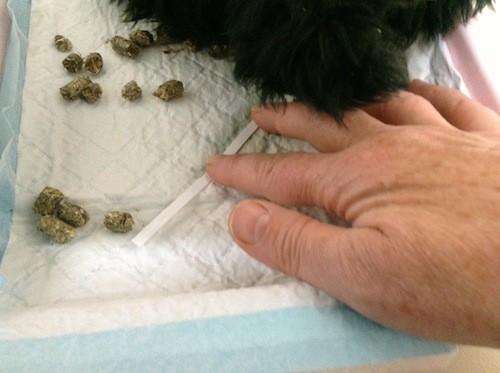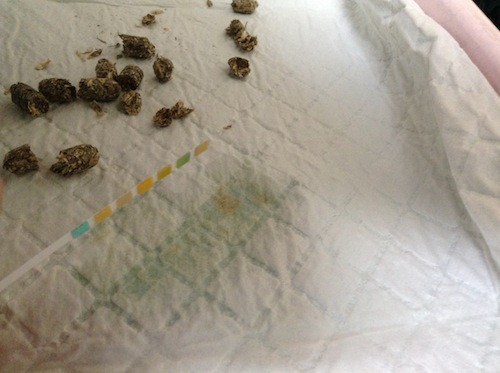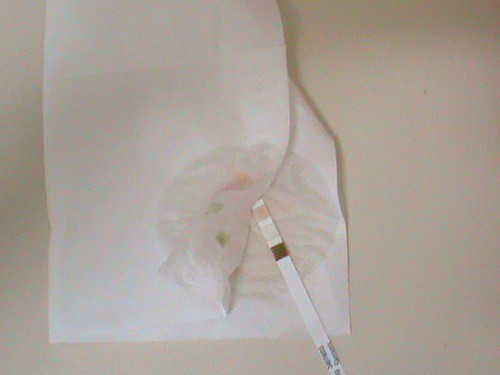Collecting a Urine Sample From the Cage/Carrier
Sometimes Fluffy arrives at the clinic unable to provide a urine sample because she has already wet the cage. Here’s how to make the best of the situation
No urine? No problem!
What may appear to be the simple process of collecting for a vet’s cat urine test can become problematic if:
- your client has been unable to collect a sample at home.
- the cat can’t urinate
- she peed in the cage on the trip to see you.
However, all is not lost so do not despair! You may still be able to create a cat urine test and get Fluffy on the road to recovery.
Assuming she has peed in the cage and the absorbent surface is wettish it is possible to get a sample and still identify glucose and ketones (and blood)
However, make sure there is no other source of glucose or blood (eg flea dirt) to contaminate it.
Absorbent pad has enough accessible liquid to conduct dipstix test
Press the stick onto the absorbent pad and allow the normal time periods for the results to show as per the cat urine stick manufacturers guidelines.


Carry case only has limited absorbent material

If the carry case had little or even no absorbent material that would have soaked up the urine, you can also try this:
Just dip the dipstick into the bit of urine on the bottom of the carrier.
If the material in the carrier has absorbed it all, then carefully fold the absorbent material over the dip stick and putting a couple of drops of clean water onto the (yellow!) urine soaked part of the paper and letting it soak into the stick underneath.
At least you will see whether there is glucose, blood or ketones there or not.
You must keep the cat’s urine dipstick clean
Take care to stop any cross mixing on the pads – it will throw the results off!
Do this by tapping gently (just on the edge) so excess goes into the tissue
It is important to do it this way to remove the extra urine and not let any of the fluid mix between the pads on the stick.
